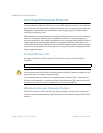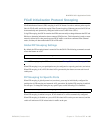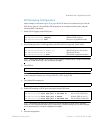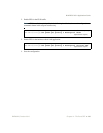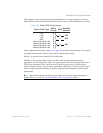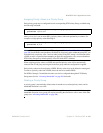
BLADEOS 6.5.2 Application Guide
200 Chapter 14: FCoE and CEE BMD00220, October 2010
Priority-Based Flow Control
Priority-based Flow Control (PFC) is defined in IEEE 802.1Qbb. PFC extends the IEEE 802.3x
standard flow control mechanism. Under standard flow control, when a port becomes busy, the
switch manages congestion by pausing all the traffic on the port, regardless of the traffic type. PFC
provides more granular flow control, allowing the switch to pause specified types of traffic on the
port, while other traffic on the port continues.
PFC pauses traffic based on 802.1p priority values in the VLAN tag. The administrator can assign
different priority values to different types of traffic and then enable PFC for up to two specific
priority values: priority value 3, and one other. The configuration can be applied globally for all
ports on the switch. Then, when traffic congestion occurs on a port (caused when ingress traffic
exceeds internal buffer thresholds), only traffic with priority values where PFC is enabled is paused.
Traffic with priority values where PFC is disabled proceeds without interruption but may be subject
to loss if port ingress buffers become full.
Although PFC is useful for a variety of applications, it is required for FCoE implementation where
storage (SAN) and networking (LAN) traffic are converged on the same Ethernet links. Typical
LAN traffic tolerates Ethernet packet loss that can occur from congestion or other factors, but SAN
traffic must be lossless and requires flow control.
For FCoE, standard flow control would pause both SAN and LAN traffic during congestion. While
this approach would limit SAN traffic loss, it could degrade the performance of some LAN
applications that expect to handle congestion by dropping traffic. PFC resolves these FCoE flow
control issues. Different types of SAN and LAN traffic can be assigned different IEEE 802.1p
priority values. PFC can then be enabled for priority values that represent SAN and LAN traffic that
must be paused during congestion, and disabled for priority values that represent LAN traffic that is
more loss-tolerant.
PFC requires CEE to be turned on (“Turning CEE On or Off” on page 192). When CEE is turned
on, PFC is enabled on priority value 3 by default. Optionally, the administrator can also enable PFC
on one other priority value, providing lossless handling for another traffic type, such as for a
business-critical LAN application.
Note – For any given port, only one flow control method can be implemented at any given time:
either PFC or standard IEEE 802.3x flow control.



